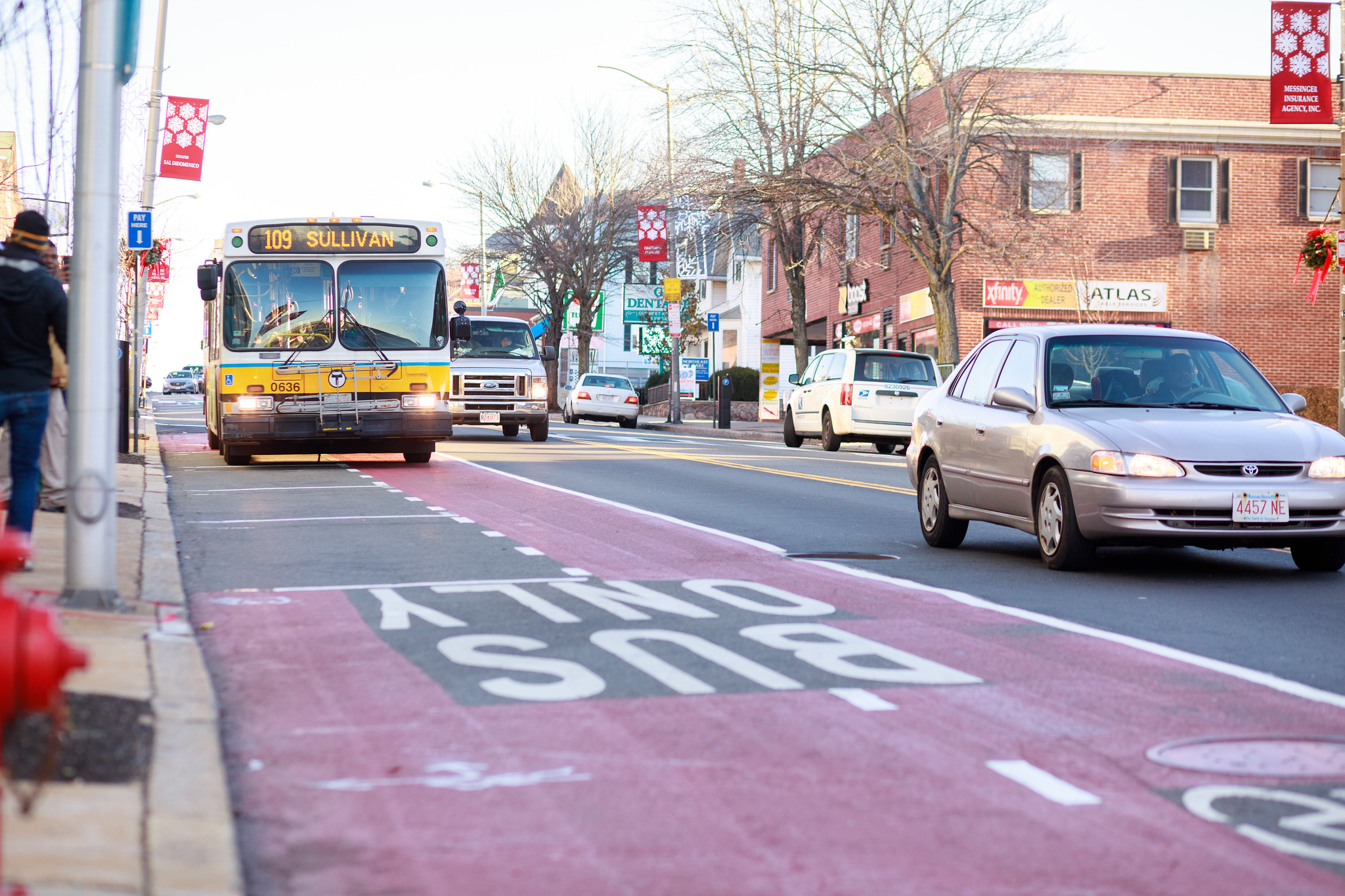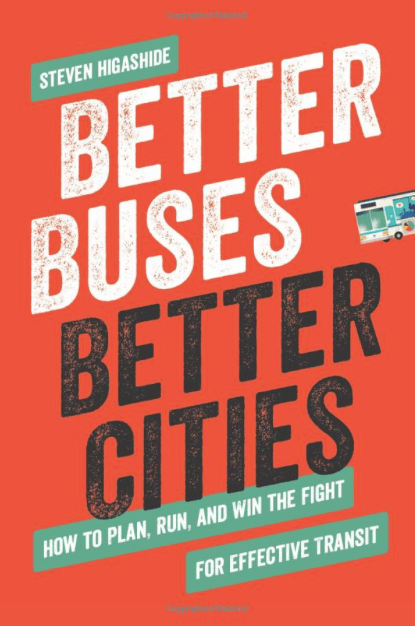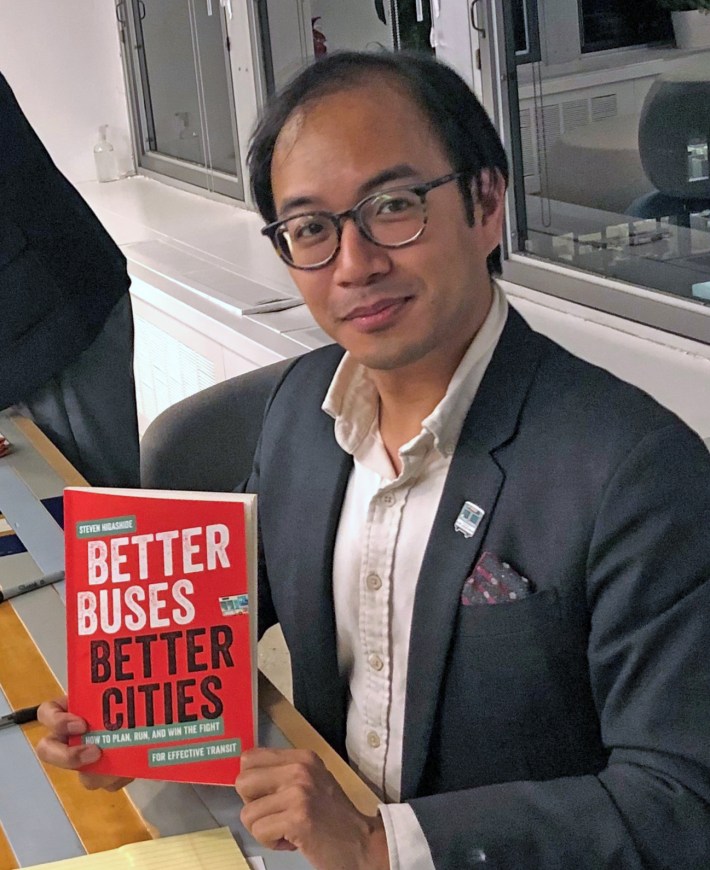New York's wildly successful experiment banning cars on a crosstown thoroughfare shows that cities don't need to dither for years over dedicated bus lanes.
The new 14th Street Busway has won over skeptics and captured the imagination of its oft-jaded citizenry like it was a new High Line — and all the city had to do was remove most cars traveling on it.
Bus-only lanes are among the simplest, most cost-effective ways of moving people through a region while cutting carbon emissions and congestion, eliminating parking, and ultimately returning some urban spaces to cyclists and pedestrians.
Union Square at 14th Street pic.twitter.com/34cPH1A4RZ
— trafficgifs (@trafficgifs) October 15, 2019
The routes have proliferated in Boston, Seattle, Minneapolis, and Los Angeles. And San Francisco is converting Market Street to a car-free avenue. But this simple and effective approach is not nearly as widespread as it should be — it's not only essential for ensuring bus transit is a viable alternative to driving, but also for maintaining a city's essential urbanity.
"Bus transit is at the heart of the fight to fix climate change and it confronts the everyday crisis of inequality," TransitCenter Director of Research Steven Higashide said at a TransitCenter panel on buses on Oct. 15. "When we frame transit with values and goals we bring more people into our tent and we win."
Higashide's new book, Better Buses, Better Cities: How to Plan, Run, and Win the Fight for Effective Transit, offers a roadmap for expanding bus transit while clawing back city street grids from a car-dependent populace.
After studying dozens of cities and transportation projects, Higashide found that if agencies expedite planning, work with advocacy groups to ensure community consent, and get policymakers to understand buses, it becomes easier to run busways along crucial corridors.
"Giving buses priority on the street doesn’t take a lot of money and it doesn’t have to take a lot of time," Higashide told Streetsblog. "It does require a bit of careful planning and organizing. It’s really important for transit agencies to think about a public process that is robust enough to get representative input in a few months and not make it a year-long process."
Speed may be the most important variable for whether a transit project is successful. There's no reason why the 14th Street Busway needed to take two years to plan and implement, not when New Yorkers could see the difference in commuting speeds and safer streets overnight.
"One of the best ways to deal with skepticism is set up a process that allows you to test the project quickly," Higashide said. "So often the proof is in the project. If there is something that needs to be tweaked about bus priority project it’s really easy to do it when you’re just doing it with cones and signage, so pilots have been really powerful in the transit world."
It helps for public sector workers to have a robust advocacy group or community-based organization to reach transit riders in their neighborhoods. The old model of holding a public forums at night over the course of several months doesn't serve bus riders who need to care for their kids after work, have second- or third-shift jobs, or don't speak English. And open houses make it easy for a handful of anti-transit activists to block a project by creating a media narrative that there's a groundswell of opposition against it.
Instead cities should embrace the "trusted advocate model" pioneered in Minneapolis and used in other places where agencies contract with neighborhood nonprofit groups to conduct surveys among riders and flyer stations and homes about any plans.
"The really important thing is to do outreach in multiple ways," Higashide said. "It seems obvious to go to train stations and bus stations, but it’s not often done. You have to work really hard to get to places where they are, and in the neighborhoods they live."
Riders know why buses are important in their lives, but convincing lawmakers, business leaders, and transit authority board members can be trickier. [In New York, for example, very few members of the regional Metropolitan Transportation Authority board ever ride the city bus. The mayor and governor literally never commute that way.]
That's where power mapping comes in. Both transportation agencies and advocacy groups should use the technique of drawing through a table or a graphic which elected officials have the power to make a project happen and which can stop it. Then advocates can target those stakeholders with specific asks, such as when activists with LivableStreets Alliance helped Boston bus riders mail postcards to Mayor Marty Walsh with a description about what better transit service meant to them. Walsh had been initially skeptical of busways but later backed several more after hearing from constituents and seeing how effective the first route in Roslindale was. [Riders Alliance played a similar role in New York.]
"We can’t pretend that transit is an apolitical planning process. We have to recognize it is political," Higashide said. "It’s important to send that explicitly political message that transit riders understand it’s a mayor’s responsibility in this case whether or not they’re getting to work on school on time." [During the battle over congestion pricing in New York City, the Tri-State Transportation Campaign created a database showing how constituents in every legislative district would benefit from a toll on drivers, who tend to be far wealthier than their transit-riding neighbors. Activists were then able to use the database to pressure individual lawmakers with specific facts about his or her constituents.]
Higashide would also like to see foundations in cities supporting transit measures, especially those whose mission is to address inequality, housing, and climate change. That could galvanize businesses and civic associations to get on the same page over a region's long-term transit projects.
But the most immediate way to get people excited about bus transit is to provide better bus service. Once bus frequency and reliability improve, new riders begin to try it and ridership grows.
"I am all for transit agencies finding fun ways to brand their service, but ultimately the quality of the service that will undue the stigma about riding the bus," Higashide said. "Success breeds success."








